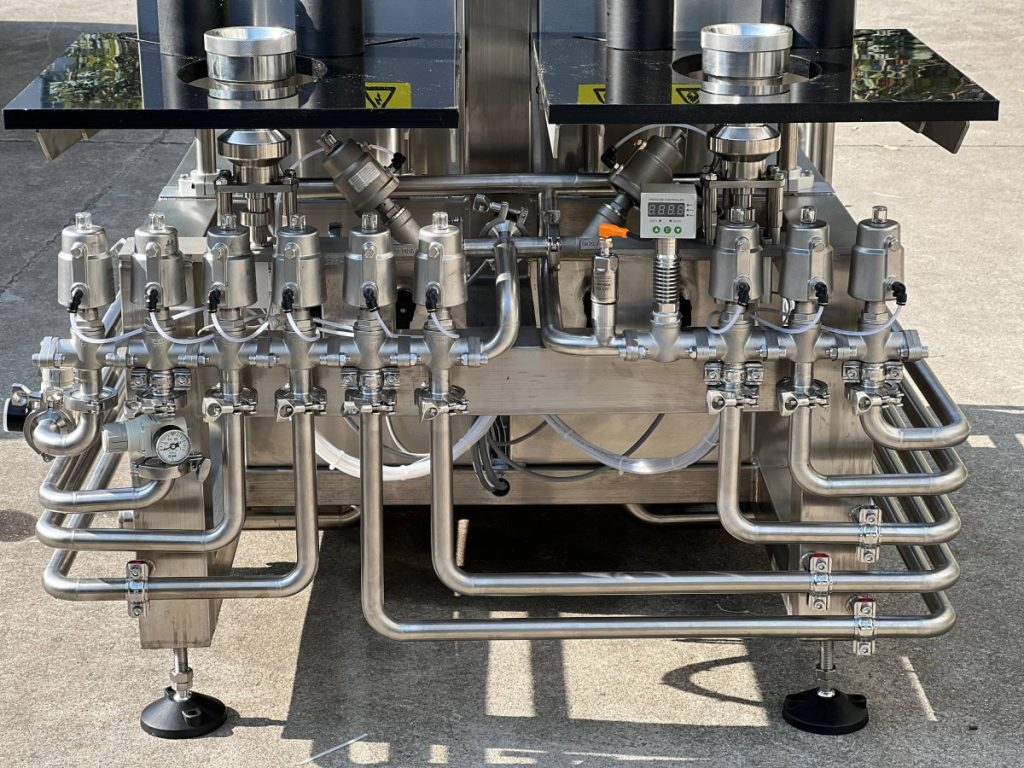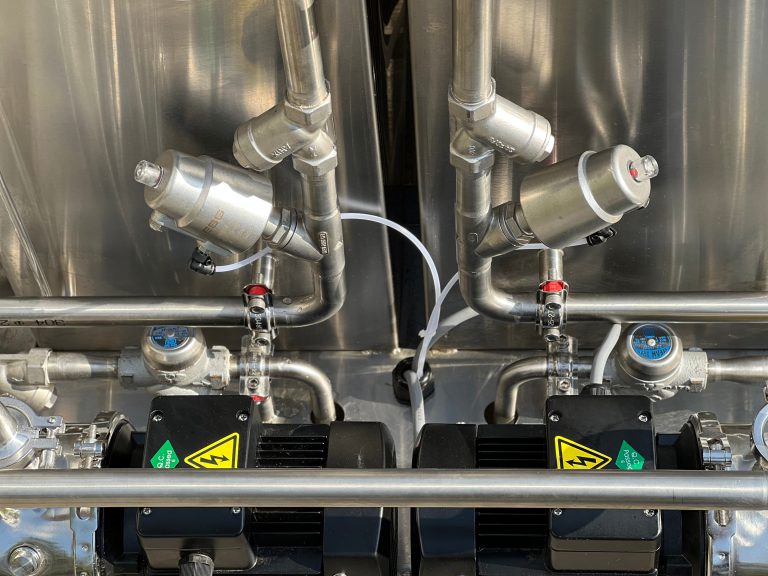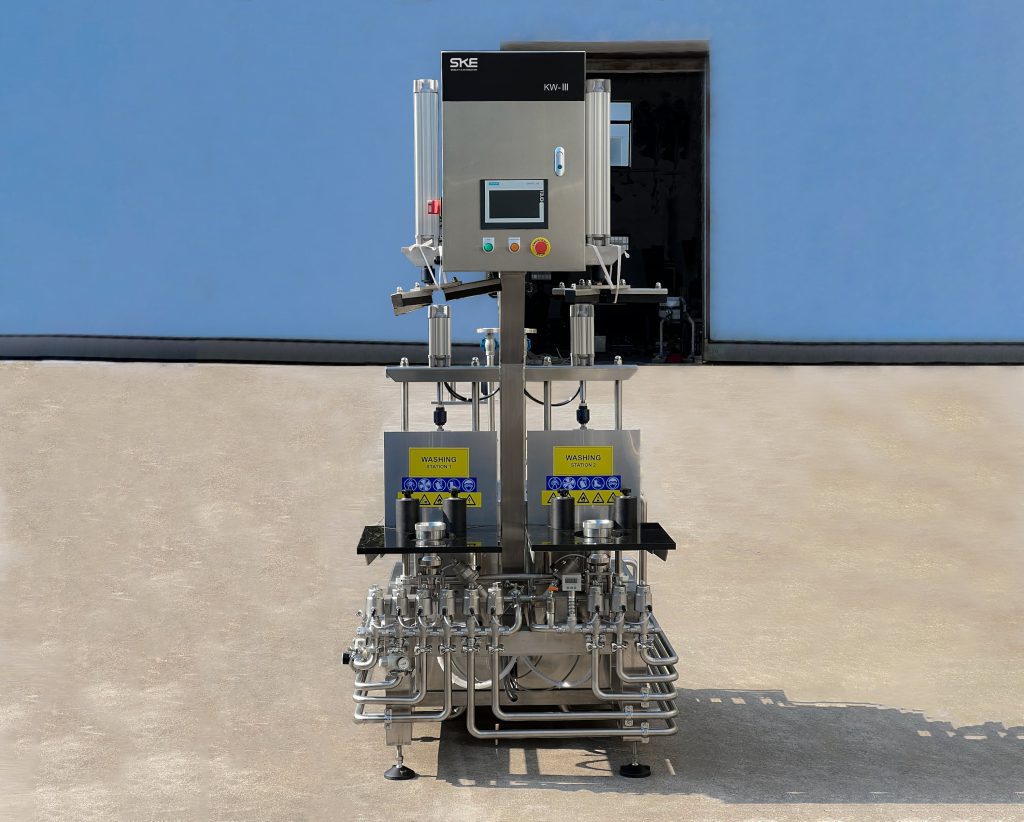Introdução

Na fabricação, a escolha entre máquinas de envase de líquidos automatizadas e manuais pode impactar significativamente a eficiência, produtividade e qualidade do produto. Os processos de envase de líquidos são críticos em indústrias que vão de farmacêuticas a cosméticos e produção de alimentos. Este blog explora as complexidades de máquinas automatizadas e manuais, destacando suas funcionalidades, vantagens e considerações.
Automated Máquinas de envase de líquidos
Automated liquid filling machines represent the pinnacle of efficiency and precision in modern manufacturing. These machines utilize advanced technology such as servo motors, PLC controls, and sensors to automate the filling process. They are designed to handle high-volume production demands with consistent accuracy and speed.
Features of Automated Máquinas de envase de líquidos
Automated machines integrate sophisticated components to ensure precise filling:
- Precision and Accuracy: Automated machines use sensors and automated controls to achieve consistent fill levels, minimizing product waste and ensuring uniform product quality.
- High Throughput: They are capable of filling a large number of containers per minute, significantly increasing production efficiency.
- Opções de personalização: Automated machines can be customized with multiple filling heads and integrated into existing production lines for seamless operation.
Pros and Cons
Automated liquid filling machines offer several advantages but come with their own set of considerations:
Prós:
- High Accuracy: They provide precise measurement and filling, reducing product giveaway and improving overall product quality.
- Maior eficiência: Automated machines operate continuously with minimal downtime, maximizing production output.
- Adaptability: They can handle a wide range of liquids and container sizes, making them suitable for diverse manufacturing environments.
Contras:
- Higher Initial Investment: Automated systems require a significant upfront investment compared to manual machines, which can be a barrier for smaller businesses.
- Complex Maintenance: Maintenance and troubleshooting may require skilled technicians and specialized knowledge of electronic and mechanical components.
- Operator Training: Proper training is essential for operators to maintain and operate automated machines effectively.
Manual Máquinas de envase de líquidos
Manual liquid filling machines have been a cornerstone in small to medium-scale production for their simplicity and affordability. These machines typically require operators to control the filling process manually, using mechanisms like valves or levers. While they offer flexibility and ease of operation, they are best suited for applications where production volumes are lower and precision requirements may be more forgiving.
Features of Manual Máquinas de envase de líquidos
Manual machines are characterized by their straightforward design, consisting of essential components such as a filling nozzle, a container platform, and manual controls. They are versatile and can handle various types of liquids, including those with different viscosities.
Pros and Cons
Manual liquid filling machines have distinct advantages and limitations:
Prós:
- Low Initial Cost: Manual machines are generally more affordable upfront, making them accessible to startups and small businesses with limited budgets.
- Ease of Operation: They are straightforward to operate and require minimal training for personnel.
- Versatilidade: Manual machines can handle a wide range of liquids and container sizes, offering flexibility in production.
Contras:
- Labor-Intensive: They rely heavily on operator skill and attention, leading to potential inconsistencies in fill levels.
- Limited Capacity: Manual filling processes are slower compared to automated systems, which may not be suitable for high-volume production needs.
- Inconsistent Fill Levels: Variability in operator technique can result in variations in fill levels, impacting product consistency.
Comparison: Automated vs. Manual Máquinas de envase de líquidos

Comparison of Automated vs. Manual Liquid Filling Machines: Evaluating Accuracy, Speed, Labor Requirements, Initial Cost, and Flexibility.
| Criteria | Automated Machines | Manual Machines |
|---|---|---|
| Precisão | Very high | Variável |
| Velocidade | Alto | Moderado |
| Labor | Mínimo | Significant |
| Custo inicial | Alto | Baixo |
| Flexibilidade | High (customizable) | Moderado |
Conclusão
Choosing between automated and manual máquinas de enchimento de líquidos involves assessing factors such as production volume, budget constraints, and desired level of precision. While automated machines excel in high-volume settings requiring consistent accuracy, manual machines remain relevant for smaller operations or specialized tasks. Ultimately, the decision should align with the specific needs and objectives of the manufacturing facility.
Perguntas frequentes
Q:Which type of máquina de enchimento de líquidos is best for startups?
A:For startups with limited budgets and smaller production volumes, manual liquid filling machines are often more cost-effective and easier to manage initially.
Q:How can automated liquid filling machines improve production efficiency?
A:Automated machines reduce human error, increase throughput rates, and allow for continuous operation, thereby optimizing overall production efficiency.
Q:What maintenance is required for automated máquinas de enchimento de líquidos?
A:Automated machines require regular calibration, cleaning of sensors, and periodic inspection of mechanical components to ensure optimal performance and longevity.
Q:Are automated liquid filling machines suitable for all types of liquids?
A:Yes, automated machines can be adjusted to handle liquids with varying viscosities and characteristics, ensuring versatility in manufacturing processes.
Q:What challenges do manual máquinas de enchimento de líquidos present?
A:Manual machines require skilled operators to maintain consistency in fill levels, are slower in operation compared to automated systems, and may not be scalable for growing production needs.

